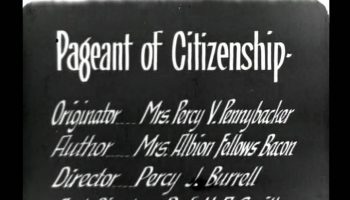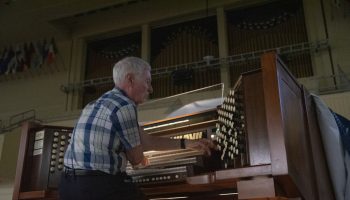The term “fake news,” used to describe deliberate misinformation spread by mainstream print, broadcast and social media, is a relatively recent concept, its nomenclature usually attributed to President Donald Trump.
The idea of fake art, on the otherhand, is nothing new. Artistic forgeries are probably as old as art itself. Literary forgeries followed suit. Now there are digital forgeries, too. Scientific advancements have made it easier to detect such fakery, but in an age of relativism, does it really matter what is phony and what isn’t?

David Kaplin is an associate professor of English at SUNY Fredonia who once practiced trademark law on Wall Street. He has studied literary piracy in the 19th century, particularly as it relates to the flagrant violations of international copyright law that vexed contemporaneously popular writers like Charles Dickens.
Kaplin’s research has led him to explore more modern iterations of such nefarious practices, and at 3:30 p.m. Friday, Aug.3, in the Hall of Christ, he will present his findings in a program called “Modern Forgeries: From Digital Plagiarism to the Phony Kouros at the Getty,” as part of the Oliver Archives Heritage Lecture Series.
There have been a number of infamous literary hoaxes in the past 50 years, most notably the Howard Hughes “autobiography” perpetrated by Clifford Irving in the 1970s and the forged “Hitler Diaries” in Germany in the 1980s. But Kaplin believes that for sheer chutzpah, the American writer Lee Israel may take the cake.
Israel had published three tepidly received celebrity biographies when, in the 1990s, she began forging — and later stealing and selling — letters from such luminaries as Ernest Hemingway, Dorothy Parker, Eugene O’Neill and Lillian Hellman, to name a few. In her own memoir, Can You Ever Forgive Me?, which will be released as a movie starring Melissa McCarthy this fall, Israel boasted of her prowess using old manual typewriters and aged paper to fool libraries and collectors around the world.
“I love the idea that she was very proud of that stuff,” Kaplin said. “She portrays herself as an endearing misanthrope.”
Israel was not the only colorful fabulist in recent history.
Mark Landis, a prolific art forger who specialized in medieval paintings, bamboozled 46 major museums, including the Smithsonian’s National Portrait Gallery, according to Kaplin.
“He is an amazing character,” Kaplin said. “He got his materials at Hobby Lobby. He liked to dress up as a Jesuit priest.”
Unlike Israel, who was convicted and sentenced to house arrest, Landis never ran afoul of the law. That’s because he donated all of his work, often in the name of imaginary family members in France, Kaplin said.
“He said he did it because he liked the way people treated him,” Kaplin said. “He thought, ‘What difference does it make? All that matters is what it looks like.’ We want these things to be real.”
Another forger, Robert L. Trotter, was sentenced to 10 months in prison in the 1990s for cheating people with bogus 19th-century folk art.
“He started off selling paintings for a few hundred dollars each, but he got greedy,” Kaplin said. “He was arrested in an FBI sting for forging a painting ostensibly by John Haberle.”
Why people continue to forge fraudulent artwork may seem puzzling, Kaplin said, because the chances of being exposed are actually high.
“Forgeries are easily called out by the science of detection today,” including radiocarbon dating and pyrolysis gas chromatography, he said. Kaplin noted that a team from Buffalo State College was employed to test one of Trotter’s “19th-century” paintings, and found that the binding agent used to get the paint to adhere to the canvas had not been developed until 2000.
On the other hand, Kaplin said, an estimated 20 percent of all major museum holdings are forgeries, and the percentage at some museums is even higher.
Just this spring, more than half of the paintings at the Etienne Terrus museum in France — 82 out of 140 pieces — were determined to be fake, Kaplin said.
But does it really matter? Was Landis right that “all that matters is what it looks like?”

In 1985, the J. Paul Getty Museum in California paid $10 million for a kouros, a statue of a standing, nude youth popular in ancient Greece.
“These archeologists claimed it was from the fourth century B.C.,” Kaplin said. “It was presented to curators, who tested it extensively and found it to be in accordance with similar statues. They tested the marble. They really went over it. So the Getty got excited and prepared for a grand showing, but just before that, they called in other experts who said ‘No, no, no! There’s something wrong with this!’”
When the statue was uncloaked at lavish dinner party in 1986, “the audience gasped and fell silent,” Kaplin said. “Then they said, ‘Oh, my God! It’s fake!’ Everyone who knew anything about this kind of art knew it was fake.”
And yet, the Getty still exhibits the controversial kouros. The museum’s catalogue describes it as: “Date: About 530 B.C. or modern forgery.”




